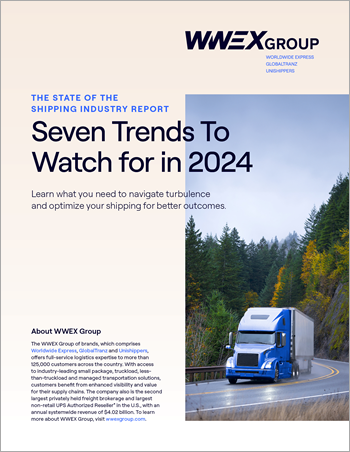The State of the Shipping Industry: 7 Trends We Are Watching in 2024
Were you impacted by the shipping turbulence of 2023? It's likely you were since a massive freight recession and soft consumer demand sent the shipping industry into a tailspin. On top of that, parcel rate increases have been announced for 2024 across all major carriers. Both events have sent shippers of all sizes and across all industries looking for solutions.
How To Navigate the Shipping Industry in 2024
Despite the adversity we are seeing, shippers like you have an opportunity to optimize your shipping operations for cost savings and efficiency. Don't know where to start? WWEX Group is here to help. Download our "State of the Shipping Industry Report: 7 Trends To Watch for in 2024" to get a peek at the topics that will shape the shipping industry this year. Here, we discuss important trends including:
- The freight recession
- Increased parcel rates
- Sustainable shipping
- Optimizing your freight shipping
- Supply chain resiliency
We also provide tips on how to leverage tools and resources to expertly navigate 2024 for increased profitability and operational efficiency. Additionally, we tell you what to look for in a shipping partner and how a 3PL can ensure your success in the coming year.
Lean On WWEX Group and Worldwide Express for a Prosperous and Profitable 2024
As a leading third-party logistics (3PL) provider, WWEX Group takes the growing pains out of growth by partnering with businesses that need shipping solutions — whether it's parcel, freight or end-to-end logistics management.
As the parent company of Worldwide Express, we provide a nearly unmatched combination of adept talent, shipping industry relationships and a far-reaching distribution model. With a unified mindset and a single infrastructure, we're redefining the standard for service and turning logistics into a growth opportunity — instead of a roadblock — for businesses of all sizes.
Download our "State of the Shipping Industry Report: 7 Trends To Watch for in 2024" to get ahead this year. If you are ready to speak to an expert, contact Worldwide Express for a free consultation today!
